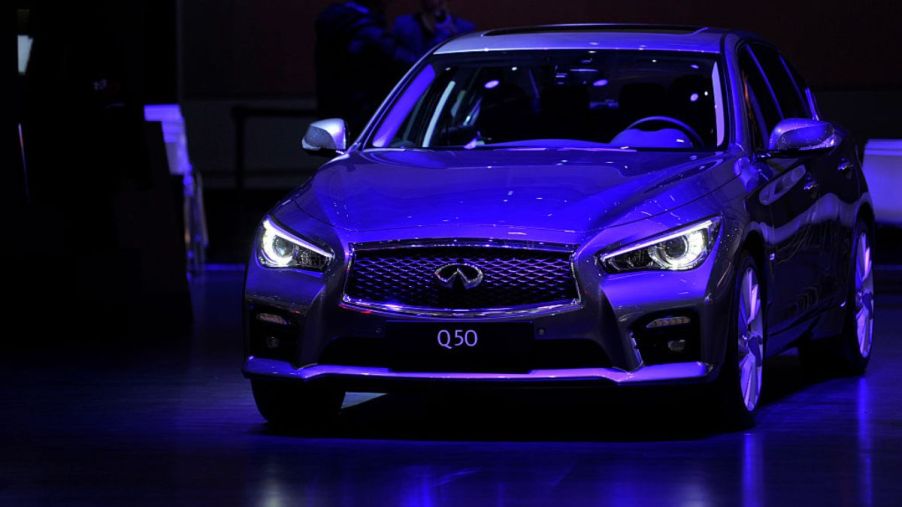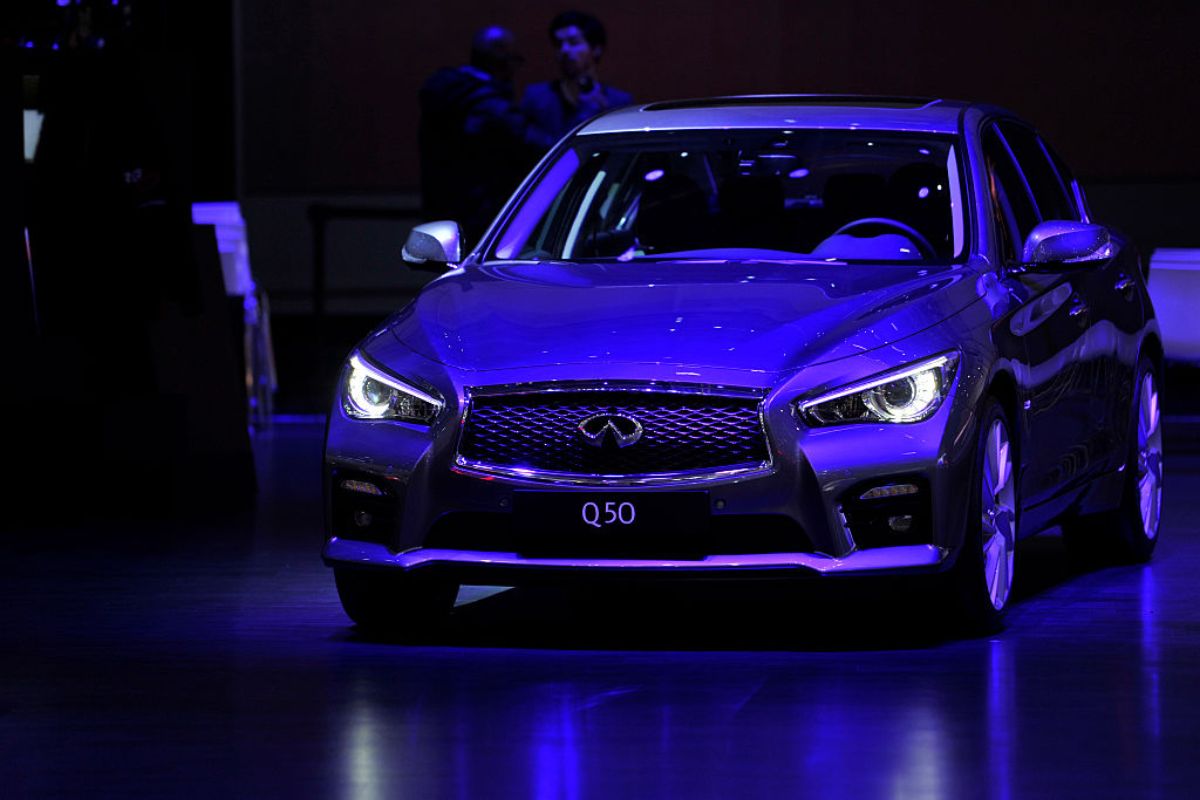
The 2015 Infiniti Q50 Is a Good Used Luxury Car for 1 Type of Buyer
The 2015 Infiniti Q50 provided a more muscular version of the G37 sport sedan it replaced. Wider and lower than its predecessor, Infiniti sought to give the luxury car ideal sporting credentials. With scowling headlights and a sculpted, sinewy hood, it had the looks to match.
U.S. News said the 2015 Q50 was “a good luxury small car, but only for buyers who prioritize performance.” That’s a big statement considering its Autobahn-cruising rivals from Germany. Let’s see how the Japanese sports sedan holds up.

2015 Infiniti Q50 performance and handling
With a 3.7-liter, dual-overhead-cam, 24-valve V6, the Infiniti Q50 puts down 328 horsepower and 268 lb-ft of torque. Although there isn’t a manual option, the seven-speed auto works well with the Q50’s limited-slip differential powering the back wheels.
The Infiniti’s VQ series engine was the first from Nissan to employ Variable Valve Event and Lift (VVEL), their version of variable valve timing. The Q50’s VVEL works to significantly improve responsiveness, balancing power and fuel economy, explains EngineLabs.com.
However, with an EPA-estimated 20 mpg in the city and 29 mpg on the highway, it was below average in the class. Yet, with an 11:1 compression ratio and a 7,500 rpm redline, it was set up well for quick acceleration.
Around the bends, the Q50 had a swift grasp of the road with double wishbone suspension in the front with a rear multi-link. Autoblog said that the Infiniti’s ride was “simply more composed than what BMWs have taught us to expect.”
The 2015 Q50 has sporty handling, but only in models that lack the available adaptive steering system, which offers vague feedback from the road. The optional all-wheel drive has the same problem, but the 2016 National Highway and Traffic Safety Administration recall fixes the software issue.
2015 Infiniti Q50 interior amenities
The five-seater Q50 boasts a quiet cabin trimmed in premium materials, including standard synthetic leather upholstery. The front sports seats are spacious and supportive, and unlike several sedans in the class, the Q50’s rear seats comfortably accommodate adults.
On the tech side, standard features included dual-zone automatic climate control, Bluetooth, a six-speaker sound system, and a push-button start. Infiniti’s InTouch infotainment system showcases an upper eight-inch and a lower seven-inch touchscreen, markedly different than others in the segment.
The Q50’s system has buttons to control two separate display screens, which U.S. News reviewers say, “seems disjointed and lacks cohesion.”
What are the alternative used luxury cars?
Shoppers may be eyeing a Mercedes C-Class as opposed to the Q50. If comfort is priority number one, they’re in luck. With a lavish interior, it will satisfy anyone who rides in it, apart from those looking for sportiness over sumptuousness. The Mercedes does net better gas mileage, but acceleration and agility will be sacrificed.
Audi’s A3 is another option, especially for those who want something with a bit of oomph. The A3 features a lineup of strong engines that are more fuel-efficient than the Infiniti’s thirsty V6. While the A3’s infotainment system is more user-friendly, it has a much smaller back seat and less trunk space.
Should you buy a 2015 Infiniti Q50?
One of the big selling points of the Q50 is its performance-first offering. While Infiniti doesn’t skimp on the interior or the cargo space, they stack up as class averages. The infotainment shouldn’t scare anyone away—the one in the Mercedes is complicated, too. While fuel economy is rather poor, the Q50 will likely fair better in reliability than its German rivals.


